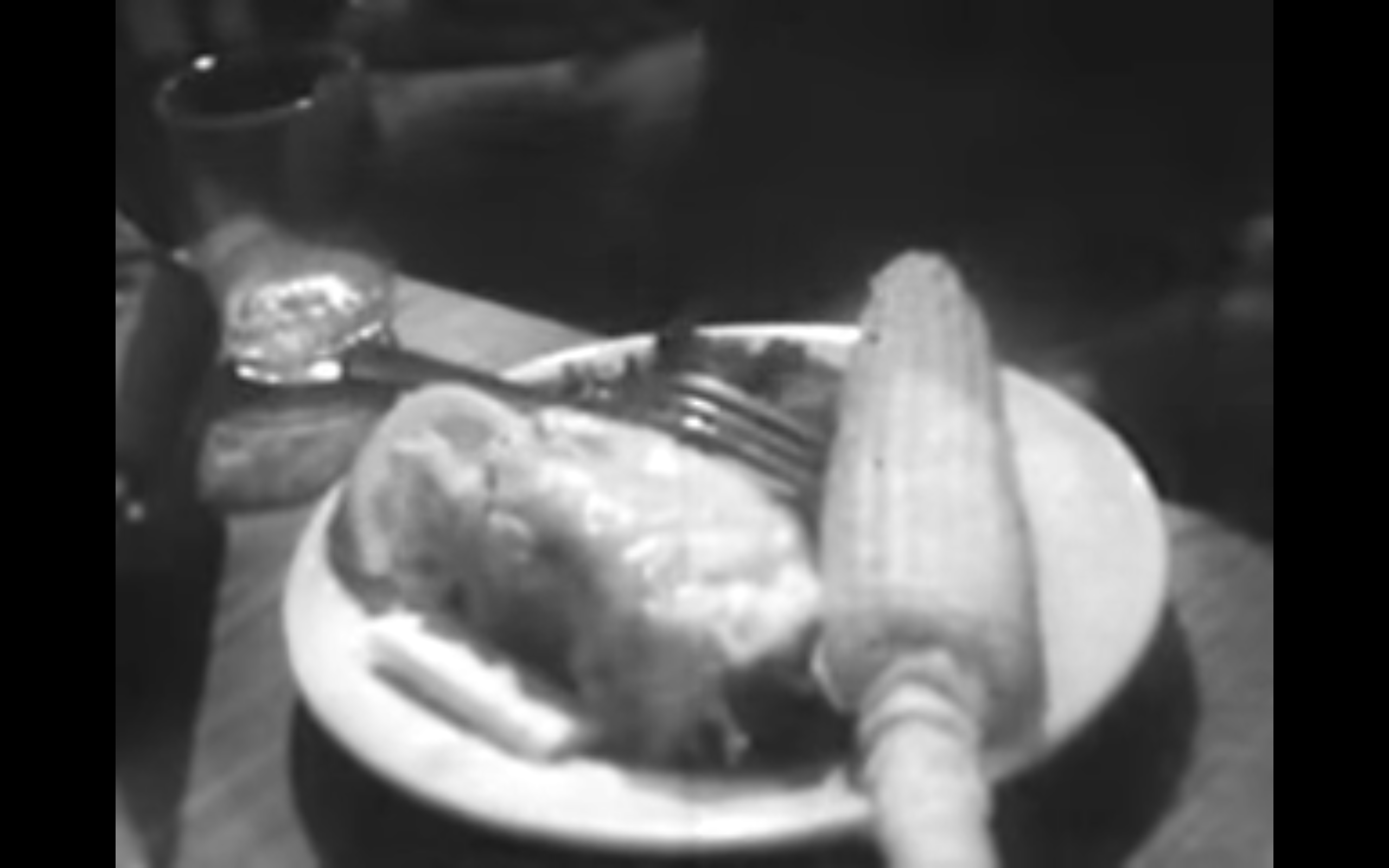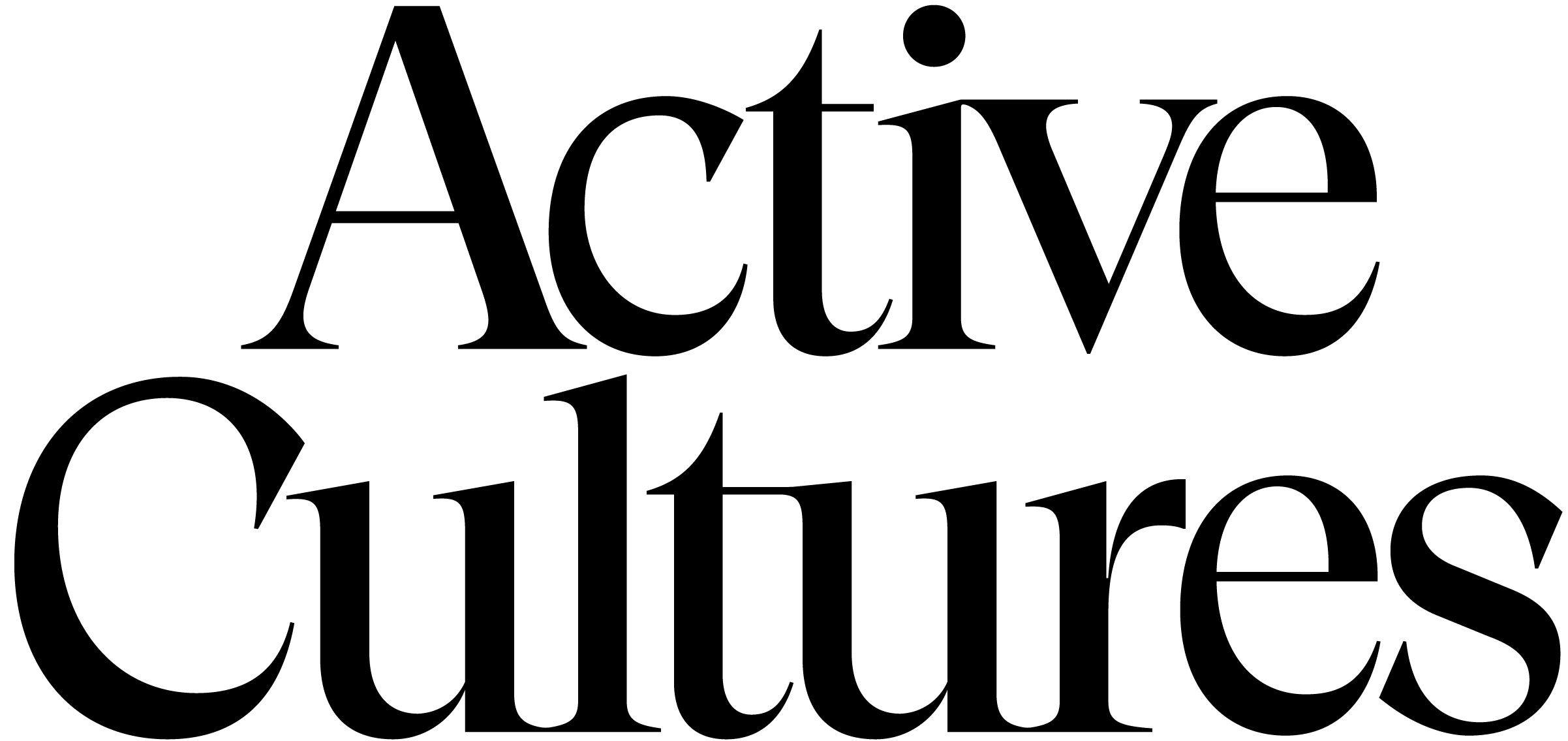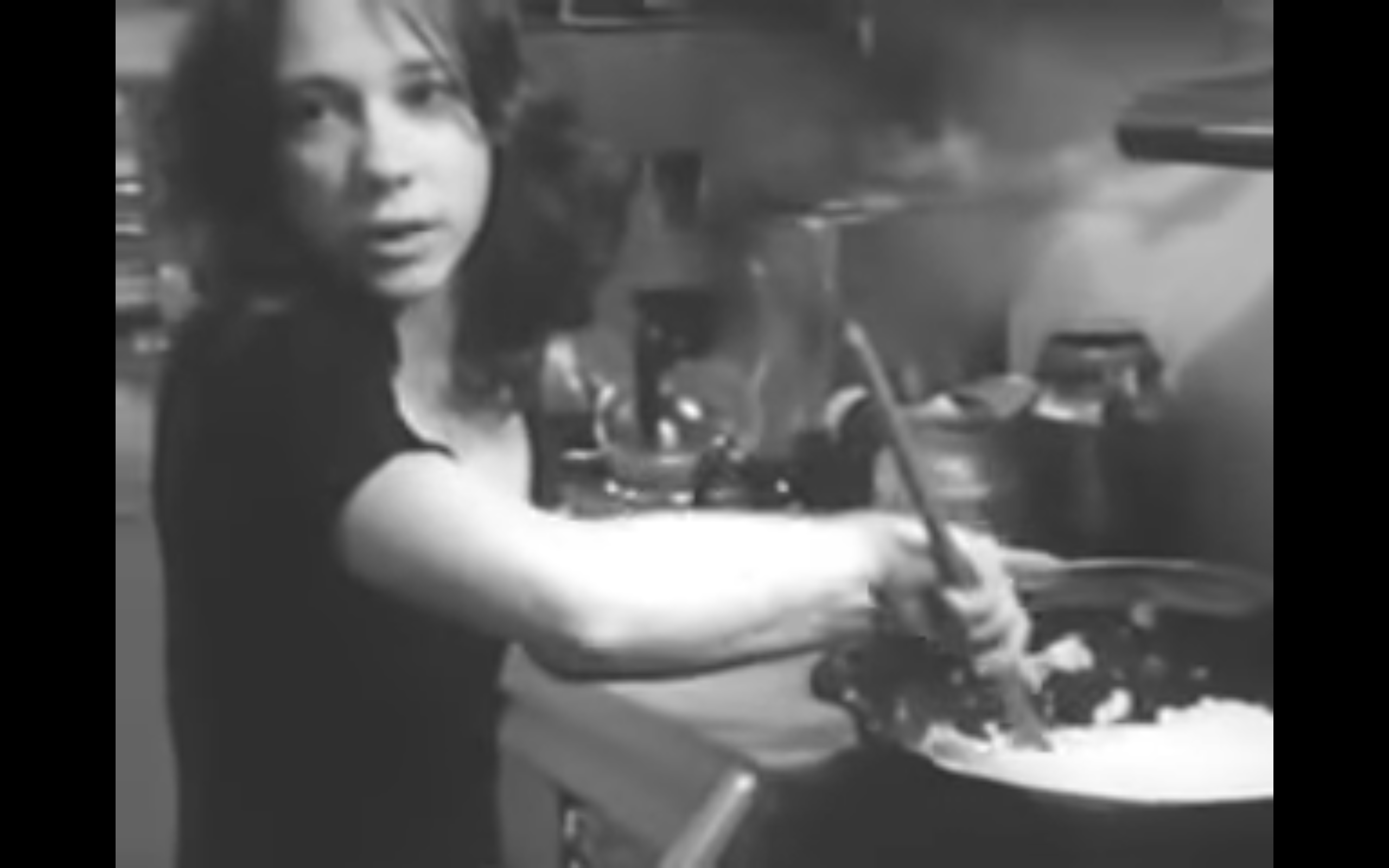"We Called Her General Girouard" was published in Active Cultures’ Digest, Issue 05, July 2020.
Images: Tina Girouard / Keith Sonnier, Tina Girouard, Lincoln Scott
Photo credits: Video still, "Food" 1972, Gordon Matta-Clark, ©Estate of Gordon Matta-Clark / Artists Rights Society (ARS), New York.
__
Jonathan Griffin is an art writer and critic based in Los Angeles. He is a contributing editor for Frieze and also writes for the New York Times, the Financial Times, Art Review, Art Agenda and others.
Images: Tina Girouard / Keith Sonnier, Tina Girouard, Lincoln Scott
Photo credits: Video still, "Food" 1972, Gordon Matta-Clark, ©Estate of Gordon Matta-Clark / Artists Rights Society (ARS), New York.
__
Jonathan Griffin is an art writer and critic based in Los Angeles. He is a contributing editor for Frieze and also writes for the New York Times, the Financial Times, Art Review, Art Agenda and others.
An ad, printed in the Spring 1972 issue of Avalanche magazine, trumpeted in boldface type 'FOOD'S FISCAL FAMILY FACTS'. Most of the readers of Avalanche would, it was assumed, be at least part way familiar with FOOD, the restaurant opened in SoHo by artists Gordon Matta-Clark, Carol Goodden, Tina Girouard, Suzanne Harris, and Rachel Lew a few months earlier. It was already a fabulous success, and the Downtown art scene was tight knit in those days and more or less identical to Avalanche's readership. Also, FOOD was the only decent restaurant in the neighborhood.
Column one of the notice broke down FOOD's total income ($63,000 in investment and $104,120.72 in gross sales) and expenditure (food, dry goods, salaries, laundry, etc.—all the mundane requisites for running a restaurant). Happily, the figures for income and outgoings matched exactly, to the penny. Columns two and three inventoried the constituent parts of the operation: a list of materials, as if FOOD were an artwork, which in some senses it was.
"4 1/2 tons various flours for bread
16,000 oranges squeezed
379 lbs rabbits stewed
1,690 lbs celery chopped
3,050 lbs carrots juiced"
The list soon gets weird:
"4,081 chickens succumbed
708 lbs fish fucked
1,554 lettuce heads
15,660 potential chickens cracked"
It eventually degenerates into what seems to be a succession of fond in-jokes, listing "dogs asked to leave" (47); "bottles of champagne disappeared" (15); "keys lost" (3 3/4 lbs); "closing orders from health department" (1); "rebellions" (2 — "The Dishwasher Rebellion of Feb. '72" and "The Radio Rebellion of May '72"); "floods by Marco" (5), "made up Social Security numbers" (7); "people needed to get it together / keep it together" (213); and, finally, "free dinners given" (3,082).
By the end of the list I am in love with this family, before I even know who they are. There follows a paragraph of well over a hundred names, beginning with the founders and progressing through every person associated with the restaurant within the first few months of its existence. A few of those names are familiar to me—Phil Glass, Bob Rauschenberg (both sic), Keith Sonnier, Robert Altman, Ed Harris (the actor?), Mr. Peanuts—but most are not, even to Google.
Tina Girouard, the artist who died in April of this year, was not the most famous name attached to FOOD, nor even one of its original founders (Goodden and Matta-Clark, then a couple, came up with the idea, and enlisted help and investment from Harris and Lew before they dropped out and Girouard stepped in). In the famous photograph of Goodden, Matta-Clark, and Girouard standing outside the restaurant, which they adapted for the first FOOD ad in Avalanche, Girouard's birdlike frame is literally overshadowed by Goodden, who stands in front. Nevertheless, she toiled at the very epicenter of FOOD. Jane Crawford, Matta-Clark's widow (he died of cancer in 1978), describes her as "the nuts and bolts" of the operation. "They called her 'General Girouard'," she says.
Girouard was, by all accounts, always at the heart of things, even if she did not necessarily seek to be the center of attention. She was a giver: by temperament a host and cook. When she and her husband, the musician Dickie Landry, arrived in New York City from Louisiana in 1969, they found a spacious loft on Chatham Square, in Chinatown, which they shared with painter Mary Heilmann. Artists and musicians passing through town would crash there, and the Philip Glass Ensemble (of which Landry was a member) would rehearse. Some of them might have lived there, too. Girouard cooked, and people would just show up.
When, in 1970, the artist Jeffrey Lew founded with Matta-Clark the alternative art space 112 Greene Street, in Soho, Girouard was naturally involved. Crawford estimates that there were perhaps 300 people living in SoHo at that time, and most of them were artists, of one kind or another. They needed somewhere to gather. 112 Greene Street hosted exhibitions including architectural interventions by Matta-Clark as well as performances orchestrated by Philip Glass, dancer Trisha Brown, and experimental theater group Mabou Mines. It totally reimagined the pre-existing models for art or performance spaces. As Girouard later recalled, "We preferred to make our own arena, not the museums or the galleries."
The Downtown denizens of New York's art scene had a place to hang; now they needed somewhere to eat as well. SoHo was still mainly industrial, so its existing restaurants were mainly daytime luncheonettes. Goodden has recalled that, like Girouard, she often found herself catering for the flash mobs of friends who gathered at her table in the evenings. "No one had any money in those days, so if anyone had any money they would cook," Crawford told me. When Goodden received a significant inheritance, she decided to share it by investing in a restaurant. (Also, she would no longer be expected to provide food for free, even if she eventually did anyway.)
FOOD opened on the corner of Prince and Wooster Streets in October 1971. It was never designated as an artwork in name—except in as much as everything Matta-Clark leant his creative energy to could be considered an artwork—but it was designed as carefully and intentionally as any of his sculptures or installations, even if that design ran counter to economy and efficiency. He and Goodden chose wooden cabinets, despite the difficulty in keeping them clean, and tiled floors, despite the discomfort of working on them all day, and an open kitchen—one of the first restaurants to do so. They eschewed a dishwashing machine in favor of a real person, visibly present in the space, who would hand-clean dishes and earn a wage. The entire organization was tailored to artists who might need only occasional work, often at late notice, even if it meant that staffing schedules were a challenge.
For Girouard, whose work at this time moved fluidly between installation and performance, to provide food and facilitate communality was entirely consonant with her art and her cultural identity. In 1971, she began a series of 'Houses' —first at 10 Chatham Square, where Hung House was a two-storied sculptural arrangement in the middle of the open-plan space of detritus and abandoned belongings from around the building. Swept House, in May of that year, was made for curator Alanna Heiss's "The Brooklyn Bridge Event," its walls consisting simply of neat rows of dirt swept on the ground. Today Girouard is perhaps best known for her work with patterned bolts of fabric and wallpaper, assembled into space-defining rectangles on the floor or the ceiling. Food didn't specifically feature in Girouard's works, but home-making (and home un-making) was an ongoing preoccupation.
In some recollections, FOOD is described as a health-food restaurant, ahead of its time, using produce from small suppliers and simple, high-quality ingredients. (Chez Panisse in Berkeley and the Moosewood collective in Ithaca were roughly contemporaneous, though the chefs at FOOD claim to have known little to nothing about them.) In others, it is the more outlandish meals that are remembered, particularly the special Sunday dinners cooked by invited artists. Matta-Clark once served a meal he titled Alive, which included oysters and hard-boiled eggs filled with live brine shrimp.
The food Girouard cooked was, of course, influenced by Cajun and Creole cuisine, and was hearty and filling. Stews, soups, and gumbos were all regular offerings. Over time, Crawford observes, the portion sizes at FOOD became less generous, as it struggled to turn a profit. After a year and a half, the three original founders drifted away from the enterprise, burned out with the stress and too tired to devote themselves to their respective creative endeavors. It survived in name for many years more, but it was never the same restaurant again.
Though there were a few other artists with Cajun roots in the Downtown scene of the time —Sonnier (who has also just passed away), Lynda Benglis, and Rauschenberg amongst them—Crawford says that Girouard carried her culture in a way that marked her as different. She hesitates to use the word "exotic". "She was very stylish, in her own way," Crawford says. "She would go with the flow. She could always manage situations flexibly, like Gordon—they both believed that art should be able to accommodate life."
![]()
![]()
![]()
Column one of the notice broke down FOOD's total income ($63,000 in investment and $104,120.72 in gross sales) and expenditure (food, dry goods, salaries, laundry, etc.—all the mundane requisites for running a restaurant). Happily, the figures for income and outgoings matched exactly, to the penny. Columns two and three inventoried the constituent parts of the operation: a list of materials, as if FOOD were an artwork, which in some senses it was.
"4 1/2 tons various flours for bread
16,000 oranges squeezed
379 lbs rabbits stewed
1,690 lbs celery chopped
3,050 lbs carrots juiced"
The list soon gets weird:
"4,081 chickens succumbed
708 lbs fish fucked
1,554 lettuce heads
15,660 potential chickens cracked"
It eventually degenerates into what seems to be a succession of fond in-jokes, listing "dogs asked to leave" (47); "bottles of champagne disappeared" (15); "keys lost" (3 3/4 lbs); "closing orders from health department" (1); "rebellions" (2 — "The Dishwasher Rebellion of Feb. '72" and "The Radio Rebellion of May '72"); "floods by Marco" (5), "made up Social Security numbers" (7); "people needed to get it together / keep it together" (213); and, finally, "free dinners given" (3,082).
By the end of the list I am in love with this family, before I even know who they are. There follows a paragraph of well over a hundred names, beginning with the founders and progressing through every person associated with the restaurant within the first few months of its existence. A few of those names are familiar to me—Phil Glass, Bob Rauschenberg (both sic), Keith Sonnier, Robert Altman, Ed Harris (the actor?), Mr. Peanuts—but most are not, even to Google.
Tina Girouard, the artist who died in April of this year, was not the most famous name attached to FOOD, nor even one of its original founders (Goodden and Matta-Clark, then a couple, came up with the idea, and enlisted help and investment from Harris and Lew before they dropped out and Girouard stepped in). In the famous photograph of Goodden, Matta-Clark, and Girouard standing outside the restaurant, which they adapted for the first FOOD ad in Avalanche, Girouard's birdlike frame is literally overshadowed by Goodden, who stands in front. Nevertheless, she toiled at the very epicenter of FOOD. Jane Crawford, Matta-Clark's widow (he died of cancer in 1978), describes her as "the nuts and bolts" of the operation. "They called her 'General Girouard'," she says.
Girouard was, by all accounts, always at the heart of things, even if she did not necessarily seek to be the center of attention. She was a giver: by temperament a host and cook. When she and her husband, the musician Dickie Landry, arrived in New York City from Louisiana in 1969, they found a spacious loft on Chatham Square, in Chinatown, which they shared with painter Mary Heilmann. Artists and musicians passing through town would crash there, and the Philip Glass Ensemble (of which Landry was a member) would rehearse. Some of them might have lived there, too. Girouard cooked, and people would just show up.
When, in 1970, the artist Jeffrey Lew founded with Matta-Clark the alternative art space 112 Greene Street, in Soho, Girouard was naturally involved. Crawford estimates that there were perhaps 300 people living in SoHo at that time, and most of them were artists, of one kind or another. They needed somewhere to gather. 112 Greene Street hosted exhibitions including architectural interventions by Matta-Clark as well as performances orchestrated by Philip Glass, dancer Trisha Brown, and experimental theater group Mabou Mines. It totally reimagined the pre-existing models for art or performance spaces. As Girouard later recalled, "We preferred to make our own arena, not the museums or the galleries."
The Downtown denizens of New York's art scene had a place to hang; now they needed somewhere to eat as well. SoHo was still mainly industrial, so its existing restaurants were mainly daytime luncheonettes. Goodden has recalled that, like Girouard, she often found herself catering for the flash mobs of friends who gathered at her table in the evenings. "No one had any money in those days, so if anyone had any money they would cook," Crawford told me. When Goodden received a significant inheritance, she decided to share it by investing in a restaurant. (Also, she would no longer be expected to provide food for free, even if she eventually did anyway.)
FOOD opened on the corner of Prince and Wooster Streets in October 1971. It was never designated as an artwork in name—except in as much as everything Matta-Clark leant his creative energy to could be considered an artwork—but it was designed as carefully and intentionally as any of his sculptures or installations, even if that design ran counter to economy and efficiency. He and Goodden chose wooden cabinets, despite the difficulty in keeping them clean, and tiled floors, despite the discomfort of working on them all day, and an open kitchen—one of the first restaurants to do so. They eschewed a dishwashing machine in favor of a real person, visibly present in the space, who would hand-clean dishes and earn a wage. The entire organization was tailored to artists who might need only occasional work, often at late notice, even if it meant that staffing schedules were a challenge.
For Girouard, whose work at this time moved fluidly between installation and performance, to provide food and facilitate communality was entirely consonant with her art and her cultural identity. In 1971, she began a series of 'Houses' —first at 10 Chatham Square, where Hung House was a two-storied sculptural arrangement in the middle of the open-plan space of detritus and abandoned belongings from around the building. Swept House, in May of that year, was made for curator Alanna Heiss's "The Brooklyn Bridge Event," its walls consisting simply of neat rows of dirt swept on the ground. Today Girouard is perhaps best known for her work with patterned bolts of fabric and wallpaper, assembled into space-defining rectangles on the floor or the ceiling. Food didn't specifically feature in Girouard's works, but home-making (and home un-making) was an ongoing preoccupation.
In some recollections, FOOD is described as a health-food restaurant, ahead of its time, using produce from small suppliers and simple, high-quality ingredients. (Chez Panisse in Berkeley and the Moosewood collective in Ithaca were roughly contemporaneous, though the chefs at FOOD claim to have known little to nothing about them.) In others, it is the more outlandish meals that are remembered, particularly the special Sunday dinners cooked by invited artists. Matta-Clark once served a meal he titled Alive, which included oysters and hard-boiled eggs filled with live brine shrimp.
The food Girouard cooked was, of course, influenced by Cajun and Creole cuisine, and was hearty and filling. Stews, soups, and gumbos were all regular offerings. Over time, Crawford observes, the portion sizes at FOOD became less generous, as it struggled to turn a profit. After a year and a half, the three original founders drifted away from the enterprise, burned out with the stress and too tired to devote themselves to their respective creative endeavors. It survived in name for many years more, but it was never the same restaurant again.
Though there were a few other artists with Cajun roots in the Downtown scene of the time —Sonnier (who has also just passed away), Lynda Benglis, and Rauschenberg amongst them—Crawford says that Girouard carried her culture in a way that marked her as different. She hesitates to use the word "exotic". "She was very stylish, in her own way," Crawford says. "She would go with the flow. She could always manage situations flexibly, like Gordon—they both believed that art should be able to accommodate life."




